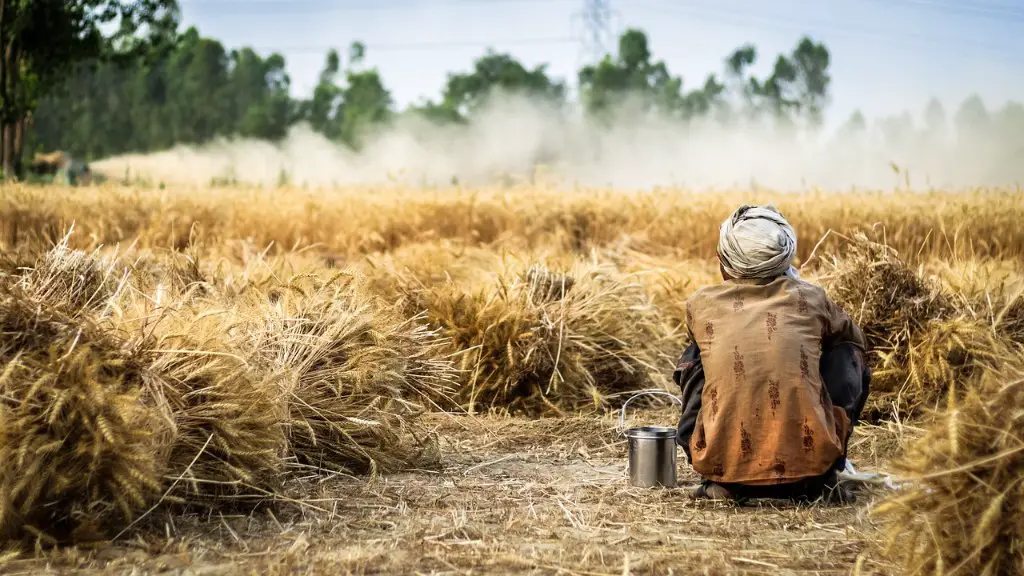Agriculture-focused aid programs are used to increase food production and availability in developing and underdeveloped countries where food insecurity and malnutrition have become a major public health issue. These programs, which are typically funded by governments or international organizations, aim to improve soil quality, support farmers, provide infrastructure for crop processing and distribution, and provide the equipment, education, and resources needed for success. They are designed to reduce hunger and feed more people in a sustainable and cost-effective way. Programs typically called “agricultural aid programs” include food-for-work projects, agricultural extension services, agricultural research, and food aid.
Food-for-Work Projects
Food-for-work projects are designed to help vulnerable communities increase food security by providing supplies and support to farmers in exchange for work. These programs are typically intended to help farmers increase the quality and quantity of their harvests. The program provides supplies, such as seeds, fertilizer, water storage tanks, and other equipment. Additionally, they provide assistance with improving infrastructure and provide incentives and training to farmers on best practices. This assistance is provided in exchange for work on projects such as building small dams, planting trees, and constructing terraces.
Agricultural Extension Services
Agricultural extension services refer to efforts that teach farmers better farming techniques and provide them with modern technologies, such as solar-powered irrigation systems. Extension services usually come in the form of field-level demonstrations, workshops, distributing pamphlets, and providing one-on-one consultations. Extension services directly help farmers with their everyday farming needs, assisting them in preparing the soil for planting, for instance, or helping them to adopt new technologies. These services can also be used to promote sustainable farming techniques, such as safe pesticide use, to protect the environment.
Agricultural Research
Agricultural research plays an essential role in improving food production in poorer nations and helping farmers become more productive and efficient. Research often focuses on identifying appropriate crop varieties and strains, finding solutions to soil fertility deficiencies, and determining the most profitable technologies available to farmers. Additionally, agricultural research can contribute to understanding the markets and developing market linkages, leading to increased incomes for farmers. Finally, research assists with determining the most appropriate tactics for fighting pests and diseases, preserving food, and improving the post-harvest infrastructure.
Food Aid
Food aid is frequently used to address food insecurity in poorer countries. It typically consists of donations from richer nations, mostly in the form of grain, rice, or cash. Food aid offers immediate relief to starving populations, but it is a temporary solution that comes with its own drawbacks. It can encourage dependency on handouts, undermine local markets, and provide little incentive for local farmers to increase production and become self-sufficient.
Integrated Initiative Programs
Integrated initiative programs combine various activities, such as food-for-work, agricultural-extension services, agricultural research, and food aid, to address agricultural needs in developing countries. These projects are typically long-term and sustainable and are aimed at providing more than just immediate relief. Integrated initiatives provide farmers with all the necessary resources and training to succeed, such as improving soil quality, increasing productivity and efficiency, and providing access to better inputs, technology, and markets.
Impact of Agricultural Aid Programs
Agricultural aid programs have had a significant impact on reducing hunger and malnutrition in poorer countries. Studies have shown that improved agricultural productivity in developing countries increases food availability, reduces malnutrition, and ultimately leads to improved overall health. Additionally, it can lead to increased incomes for farmers and decreased poverty levels, which can have a positive ripple effect on the entire community.
Limitations of Agricultural Aid Programs
Despite the positive developments these programs have achieved, they come with some drawbacks. The lack of capacity and resources to implement these long-term programs are often an issue in poorer nations. Additionally, the impact of these programs varies depending on the type of program, the region, and the local economic situation.
Conclusion
Agricultural aid programs have made considerable progress in hunger alleviation, infrastructure development, and poverty reduction in poorer countries. These programs, which include food-for-work projects, agricultural extension services, agricultural research, and food aid, are essential for increasing food production, improving soil quality, providing infrastructure for crop processing and distribution, and providing training and resources for farmers. However, these programs come with their own limitations, such as a lack of capacity and resources, making it difficult to implement long-term initiatives in poorer countries.


